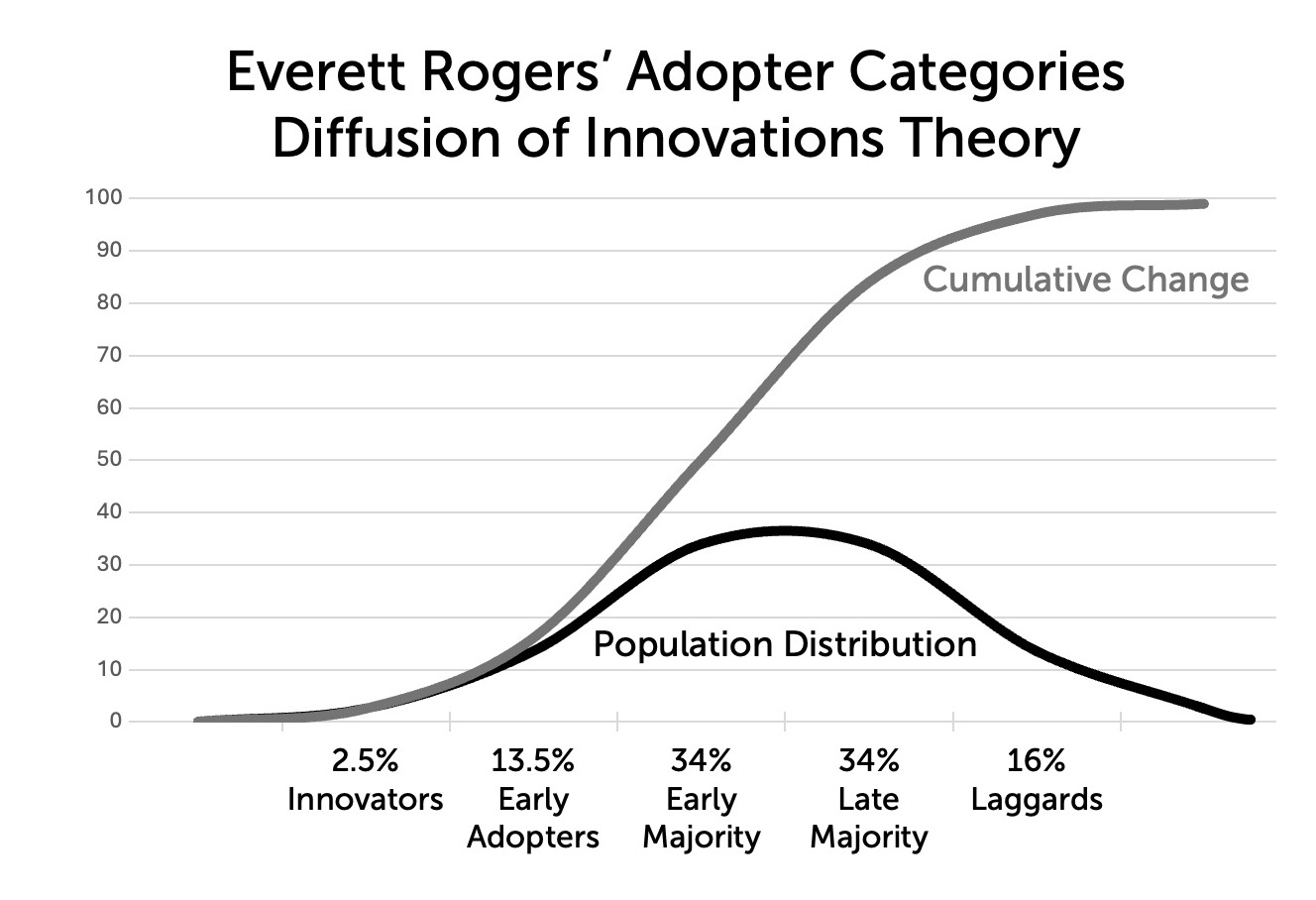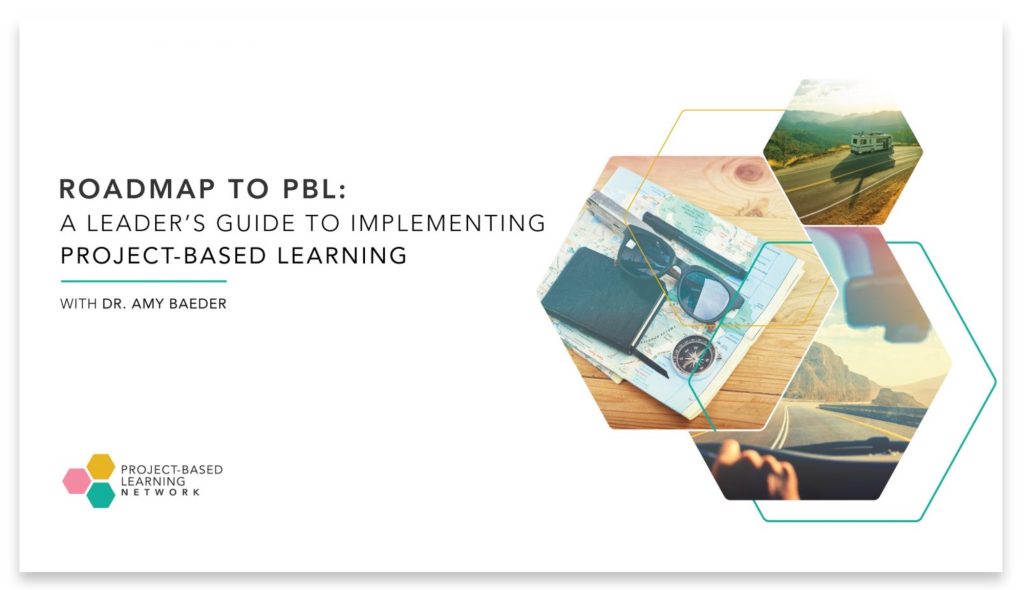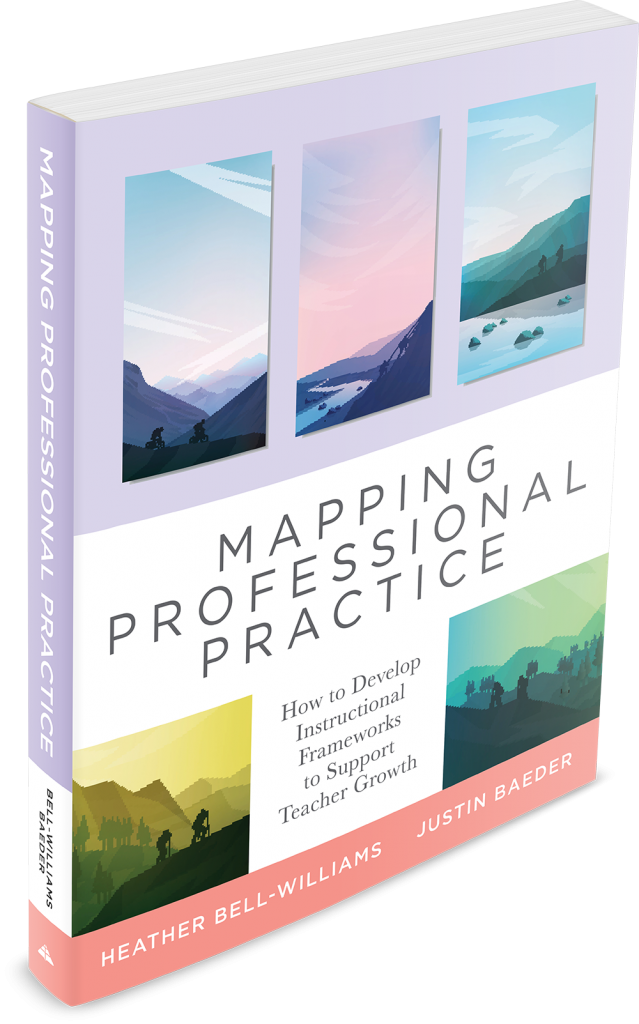How can leaders overcome resistance, work through implementation challenges, and achieve sustainable improvement? Lean Change is the answer.
by Justin Baeder, PhD

As leaders, we put a great deal of thought into which improvement opportunities to pursue.
For example, your organization may be considering project-based learning as a way to make learning more motivating and engaging for students.
But too often, we don't think about how to best approach a change in terms of timing and support. Let's compare two models—Bulk and Lean Change.
Bulk Change: Everyone At Once
The traditional approach to change in schools is what I call Bulk Change: everyone makes the change at once.
New initiatives are typically adopted school- or district-wide, with everyone starting at the same time and implementing on the same schedule.
For example, a Bulk Change approach to project-based learning might involve a whole-staff training and the expectation that everyone teach their first PBL unit at the same time.
Bulk Change has obvious appeal:
- The expectations are the same for everyone—no exceptions
- Everyone can be trained at the same time, minimizing logistics and expenses
- Leaders can devote their attention to the change for a specific period of time
The only problem?
Bulk change doesn't actually work very well.
Change is often complex and challenging, and if everyone is starting from scratch, there's not much internal capacity to support those who are struggling.
Bulk Change ensures you'll face the maximum possible resistance, and it's the least effective approach for building momentum.
To understand why, we need to understand how people change.
It's not just an individual matter—change is inherently social.
Everett Rogers and Diffusion of Innovations Theory

In his classic book Diffusion of Innovations, sociologist Everett Rogers identified five “adopter categories” that describe people's orientation toward change:
- Innovators—about 2.5% of the population
- Early Adopters—about 13.5% of the population
- Early Majority—about 34% of the population
- Late Majority—about 34% of the population
- Laggards—about 16% of the population
Surprisingly, these categories reflect stable tendencies—no matter the change, people tend to adopt it in a specific order relative to their peers.

In any change process, some people prefer to go first, some people gravitate to the middle of the pack, and others will always attempt to change last (if at all).
These five groups:
- Have different orientations to risk
- Vary in their openness to change
- Need different types of support
- Play different (and not always helpful) roles in the change process
Heather Bell-Williams and I summarize Rogers' adopter categories on p. 175 of our book Mapping Professional Practice: How to Develop Instructional Frameworks to Support Teacher Growth:

© Solution Tree. All Rights Reserved
Rogers' model offers us two keys to sustainable improvement:
- Maximizing momentum and
- Minimizing resistance
In Lean Change, we let the most eager groups who exhibit the least resistance go first, building momentum for everyone who follows.
We can learn from the experience of those who are most willing to experiment and take risks, so we can flatten the learning curve for those who are more change-averse.
Under a Bulk Change model, in contrast, all of these groups are forced to change at the same time.
This has the unintended effect of maximizing resistance at precisely the point when momentum is the lowest—the very beginning.
When we start with the right people, we can build the momentum we'll need to succeed.
Lean Change: Help The Right People Go First
Innovators and Early Adopters are eager to change, and they need very little support.
In fact, they often try new things without asking permission!
To build the most momentum, let your Innovators and Early Adopters go first. They're happy to take risks and make mistakes along the way, which makes them the perfect people to iron out the wrinkles in any change effort.
Everyone who comes after these earlier adopters will need these issues these issues to be resolved first, because they're more risk-averse and require more support in order to change.
This first group needs a clear vision and leadership, but is also willing to be more self-directed than later adopters.
For a PBL initiative, for example, key leaders might participate in the PBL Instructional Leader program to develop a deep understanding of the changes they'll be asking teachers to implement, and develop a plan to support the initiative.
Early adopters who will be developing and teaching PBL units can take the PBL Curriculum Developer Certification program to build internal capacity.
When later adopters receive in-person or online PBL training, they'll benefit from the momentum leaders and earlier adopters have already built.
Lean Change makes it easier to get the timing and support right for each adopter category.
Use Momentum To Overcome Resistance
The Late Majority and Laggards—let's call them the “later adopters” collectively—would rather not change. In extreme cases, they'll dig in their heels and simply refuse—even to the point of quitting.
But it's not that they can't change. It's that they need to go last, and they need high levels of support.
At the beginning of a change initiative, many implementation details remain uncertain, and many questions remain unanswered. This uncertainty may not bother leaders or earlier adopters, but it's paralyzing to later adopters.
So don't even give them a chance to derail the change. Start with those who are ready, build momentum, and bring the later adopters along later.
Here are three simple options for allowing the right people to go first.
Lean Change Model 1: Pilot Project
A “pilot” allows some people to implement a change before a formal organization-wide decision is made. This experience can inform both the decision itself and the full implementation.
For example, if you're considering a new math curriculum, you might pilot one or more options with earlier adopters.
It might be tempting to choose a particular team—say, one course or grade level—and have all teachers pilot the change.
But it's unlikely that everyone on that team is an earlier adopter. Most people simply don't like to go first—though earlier adopters do tend to gravitate toward each other, so it's possible.
So rather than make an entire team pilot the change, start with one or two people who are truly earlier adopters—your Innovators or Early Adopters.
If you have to do several pilots to find the right option, that's OK—your earlier adopters are happy to try new things and figure out what works best.
When it's time for full implementation, their experience can help everyone else succeed with fewer bumps in the road.
Whether or not you do a pilot, consider breaking full implementation into two or more waves.
Lean Change Model 2: Two Waves
At a minimum, offer two waves of implementation—a “Cohort 1” and “Cohort 2.”
Even if you're facing a hard deadline for full implementation, allowing some people to start even a few weeks early will generate powerful insights and build everyone's confidence.
Of course, the downside of implementing change in waves is that it requires multiple rounds of support, such as professional development, sub days, coaching, and materials purchases.
However, if you have limited capacity anyway—for example, too few coaches and trainers to work with everyone at once, or too few subs to provide coverage for everyone—this drawback becomes an advantage.
Because later adopters need much higher levels of support, you may even consider breaking a change into three or more waves.
Coaches and trainers can provide more intensive support for the later waves, and earlier adopters can be enlisted to share their experience and help support later adopters.
Lean Change Model 3: Three Or More Waves
Breaking a change into three or more waves gives you even more flexibility in allowing earlier adopters to go first, while providing the supports later adopters need.
Depending on the timing of each wave, consider offering different options such as:
- Sub coverage for training during the regular school day
- Saturday trainings with paid extra time during the school year
- Coaching support while school is in session
- Paid training time on non-school days, e.g. over the summer
- Paid planning time on non-school days or sub coverage for planning on school days
Build Capacity Through Organizational Learning
Lean Change works because it respects the reality of adopter categories—people need to change in a specific order relative to their peers.
When we let them—empowering the right people to go first—we minimize resistance and maximize organizational learning.
But this learning isn't just for teachers—it's also for leaders who are supporting the change and making decisions about resources, implementation, and the timing of other initiatives.
When implementing a complex improvement effort like PBL, it's essential for leaders to develop a deep understanding of what they're asking teachers to do.
Then, over time, it's essential to build this same knowledge—along with the practical know-how—in the teachers who will be doing the work in their classrooms.
With increasing organizational expertise, later adopters will have the support they need to overcome their internal resistance and the implementation challenges they'll face.
Have other questions? Leave a comment.
Leave a comment below if you have other questions about Lean Change.
Get The Book
For more information on Lean Change, see Chapter 11: Supporting Organization-Level Initiatives with Instructional Frameworks in Mapping Professional Practice: How to Develop Instructional Frameworks to Support Teacher Growth.
Learn More: Leading Project-Based Learning
If you're implementing PBL—or considering it—learn more in Dr. Amy Baeder's free webinar Roadmap To PBL: A Leader's Guide to Implementing Project-Based Learning.

In this webinar, you will:
- Discover the 10 guideposts on the “PBL Roadmap for School and District Leaders”
- Find out where you are on the roadmap and assess your organization’s readiness to implement PBL
- Explore the distinctive elements of high-performance project-based learning
- Uncover the difference between PBL initiatives that succeed and those that fail
- Determine your next steps in leading project-based learning for your school and district
About the Author

Justin Baeder, PhD is Director of The Principal Center, where he helps senior leaders in K-12 organizations build capacity for instructional leadership.
A former principal in Seattle Public Schools, he is creator of the Instructional Leadership Challenge, which has helped more than 10,000 school leaders in 50 countries around the world:
- Confidently get into classrooms every day
- Have feedback conversations that change teacher practice
- Discover their best opportunities for school improvement
Dr. Baeder is the author of Now We're Talking! 21 Days to High-Performance Instructional Leadership, and the co-author, with Heather Bell-Williams, of Mapping Professional Practice: How to Develop Instructional Frameworks to Support Teacher Growth (Solution Tree).
He is the host of Principal Center Radio, a podcast featuring education thought leaders, and the founder of Repertoire, the professional writing app for instructional leaders.
He holds a PhD in Educational Leadership & Policy Studies from the University of Washington and an MEd in Curriculum & Instruction from Seattle University, and is a graduate of the Danforth Program for Educational Leadership at UW.


Thanks for sharing!